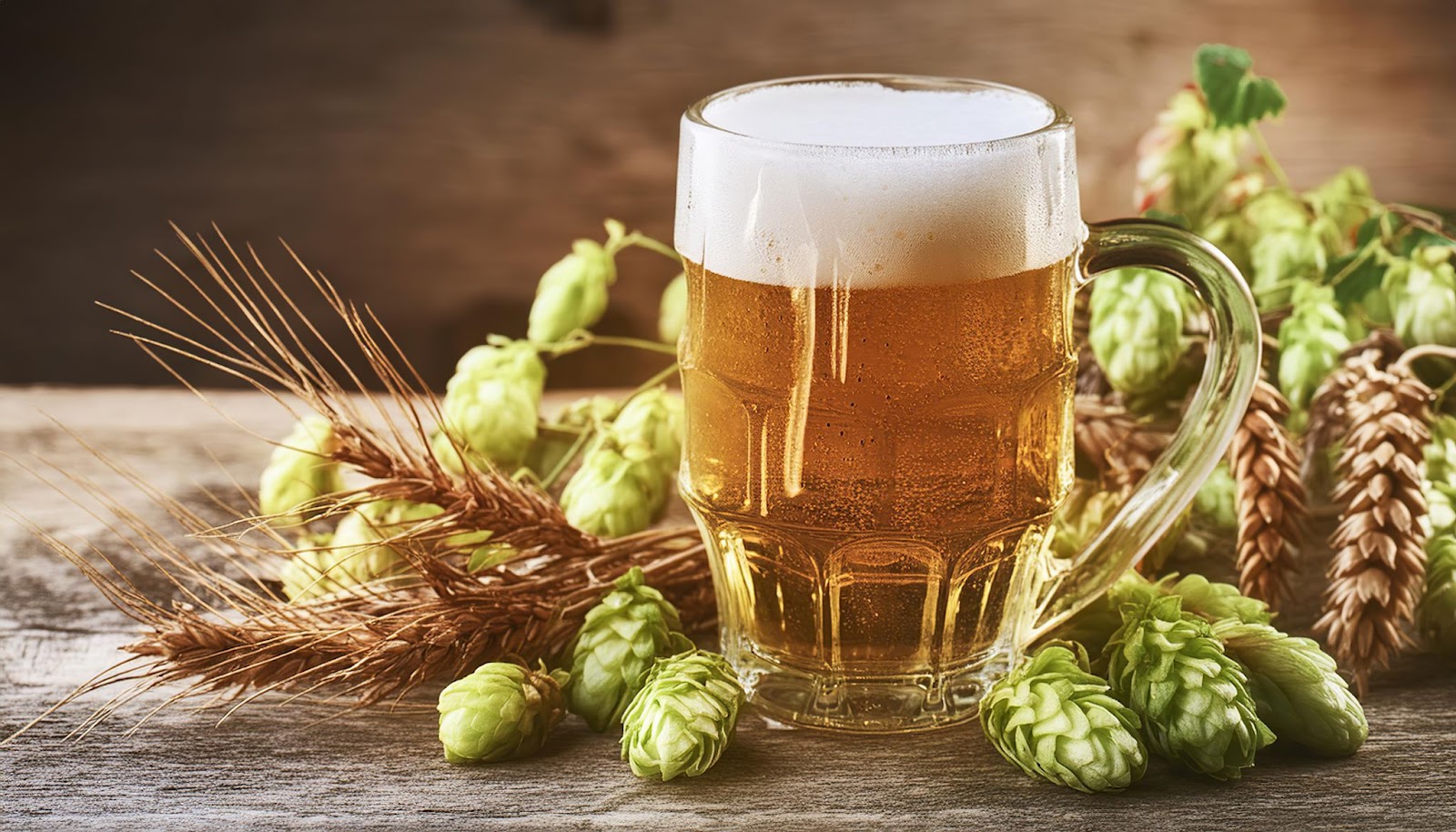Hops play a pivotal role in brewing, imparting unique aromas, bitterness, and flavors to beer. Understanding the various hop types is crucial for both professional brewers and homebrewing enthusiasts. It is essential for mastering the brewing process. This guide will explain the different types of hops, clarify their characteristics, and provide tips on how to use them effectively. By the end of this article, you will understand hops and be able to choose the right variety for your next brew.
The Basics of Hop Varieties
Hops, the green cone-shaped flowers of the Humulus lupulus plant, serve primarily as bittering, flavoring, and stability agents in beer. There are countless hop varieties, each with unique characteristics that can drastically alter your brew’s profile. The most common way to classify hops is by their usage – bittering, aroma, and dual-purpose.
Bittering Hops:
Bittering hops are high in alpha acids, which contribute to the beer’s bitterness. Varieties like Magnum, Chinook, and Columbus are popular choices for adding a robust bitter backbone to beers such as IPAs and stouts. Understanding hop characteristics is crucial for selecting the right bittering hops, particularly their alpha acid percentage and cohumulone levels, which affect the smoothness of the bitterness.
Aroma Hops:
Aroma hops, on the other hand, are low in alpha acids but high in essential oils that provide complex aromas and flavors. Citra, Cascade, and Amarillo hops are renowned for their aromatic contributions, delivering citrusy, floral, and fruity notes. Brewing with different hops, especially aromatic ones, can significantly influence the sensory experience of your beer.
Dual-Purpose Hops:
Dual-purpose hops, such as Simcoe and Centennial, offer a balance between bitterness and aroma. These versatile hops can be used at various stages of brewing – from the boil to dry hopping, providing both bitterness and intricate hop flavor profiles.
Popular Hop Varieties and Their Profiles
Selecting hop varieties isn’t just about their type; it’s also about their individual profiles. Exploring popular hop varieties can give you a better grasp of what each one can bring to your brew.
Cascade:
Cascade hops are a cornerstone of American craft brewing. Known for their robust floral, citrusy aroma and moderate bitterness, they’re a staple in American Pale Ales and IPAs. The grapefruit and pine notes are quintessential characteristics of this variety, making it a go-to for many brewers.
Citra:
As the name suggests, Citra hops are famous for their high citrus character, delivering intense lime, grapefruit, and tropical fruit flavors. This makes them an excellent choice for juicy IPAs and hop-forward ales. Understanding hop characteristics is essential when choosing Citra, as their pronounced flavors can dominate a beer if not balanced properly.
Amarillo:
Amarillo hops are celebrated for their relatively high alpha acids and captivating aroma. With a distinctive orange-citrus flavor profile, they’re ideal for pale ales and IPAs. They provide a pleasant, aromatic quality that complements a variety of brewing styles.
Simcoe:
Simcoe is a versatile dual-purpose hop with an array of complex flavors, including berry, earth, and pine. It’s a popular choice for IPAs and American ales, both for its robust bitterness and aroma profile. Brewing with different hops, like Simcoe, allows for creative blending to achieve unique flavors.
Factors to Consider When Choosing Hop Varieties
Choosing hop varieties goes beyond just browsing a list and selecting the one with the most appealing name. Several factors come into play, each influencing the final outcome of your brew.
Purpose:
Determine the primary purpose of the hop addition. Are you seeking bitterness to balance malt sweetness, or are you aiming for a vibrant aroma to define your beer’s character? Different types of hops serve distinct roles, and defining your goal helps narrow your selection.
Flavor and Aroma Profile:
Understanding hop characteristics, particularly their flavor and aroma profile, is crucial. Each hop variety brings distinct notes, from pine and earthy to citrus and tropical. Consider your desired flavor outcome and choose accordingly. For instance, if you aim for a tropical, juicy IPA, varieties like Citra and Mosaic would be ideal.
Alpha Acid Content:
Alpha acids are critical in determining the bitterness of the beer. Higher alpha acid hops contribute more bitterness and are often used in smaller quantities, while lower alpha acid hops are used in greater amounts for flavor and aroma without overwhelming bitterness.
Usage Stage:
The stage at which hops are added in the brewing process significantly affects the beer. Early boil additions primarily impart bitterness, while late boil and dry hop additions emphasize aroma and flavor. Familiarizing yourself with these stages can guide you in making informed decisions about which varieties to use and when.
Harmonizing Hops with Beer Styles
Different beer styles have unique hop requirements. Understanding hop varieties and their applications is essential for creating a harmonious balance within various styles.
IPAs and Pale Ales:
IPAs (Indian Pale Ales) and Pale Ales are hop-centric styles where hops take center stage. Popular hop varieties like Centennial, Simcoe, and Amarillo hops are often used to achieve bold, pungent aromas and flavors. These varieties provide citrus, pine, and tropical fruit notes that complement the style’s characteristic bitterness.
Lagers and Pilsners:
While known for their malt-forward profiles, lagers and pilsners also benefit from carefully chosen hops. Noble hop varieties, such as Saaz and Hallertau, are mild and delicate, imparting subtle floral and spicy notes. These hops enhance the crisp, clean character of these beers without overpowering the malt.
Stouts and Porters:
In darker styles like stouts and porters, hops play a supporting role. Varieties like Fuggle and East Kent Goldings provide earthy, herbal bitterness that balances the rich, roasted malt flavors. Brewing with different hops in these styles helps to ensure a balanced and nuanced flavor profile.
Belgian Styles:
Belgian beers often showcase a symphony of flavors, where hops contribute additional layers of complexity. Varieties like Styrian Goldings and Tettnang offer aromatic spices and floral notes that complement the fruity, phenolic character of Belgian yeast strains.
Exquisite brewing lies in mastering the interaction between malt, hops, yeast, and water. By considering the relationship between hop varieties and beer styles, you can craft a beverage with harmony and depth.
The multifaceted world of hops offers endless possibilities for brewers to explore and experiment. With a deeper understanding of hop varieties, their characteristics, and their application in different styles, you can craft beers that are expressive, well-balanced, and uniquely yours. Here at Havoc Brew Supply, we are dedicated to supporting your brewing journey with top-quality hop varieties and expert advice.
Ready to take your brewing to the next level? Explore our diverse selection of hops at Havoc Brew Supply and embark on your next brewing adventure. Get started today and elevate your brews with the perfect hop varieties.







